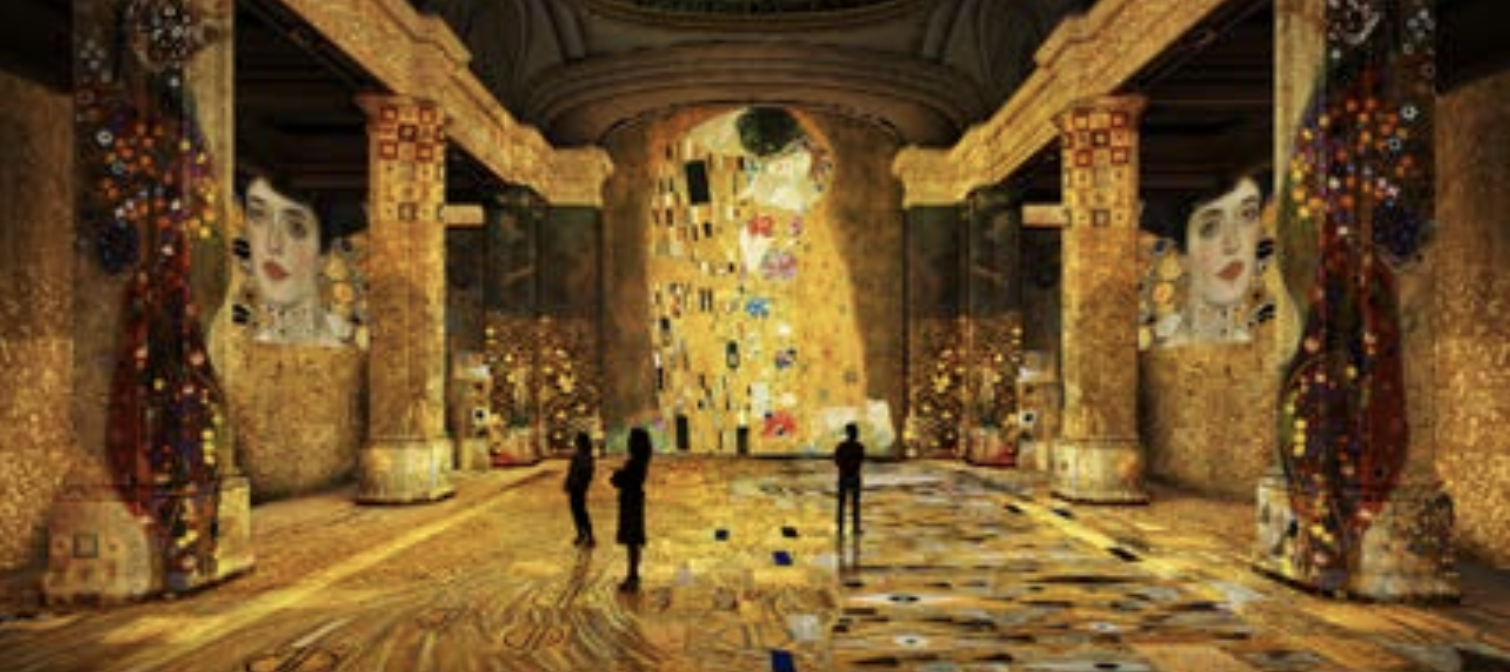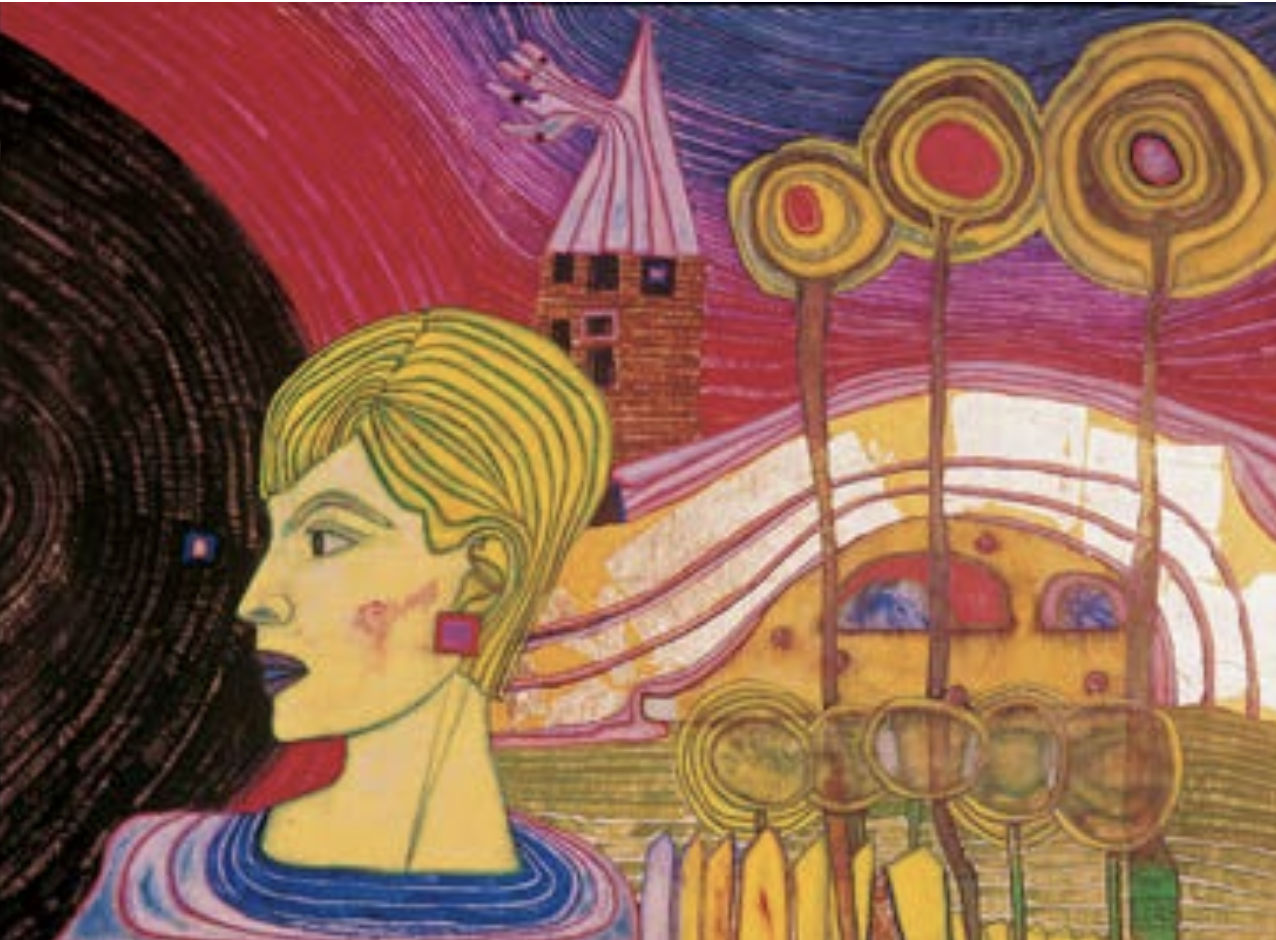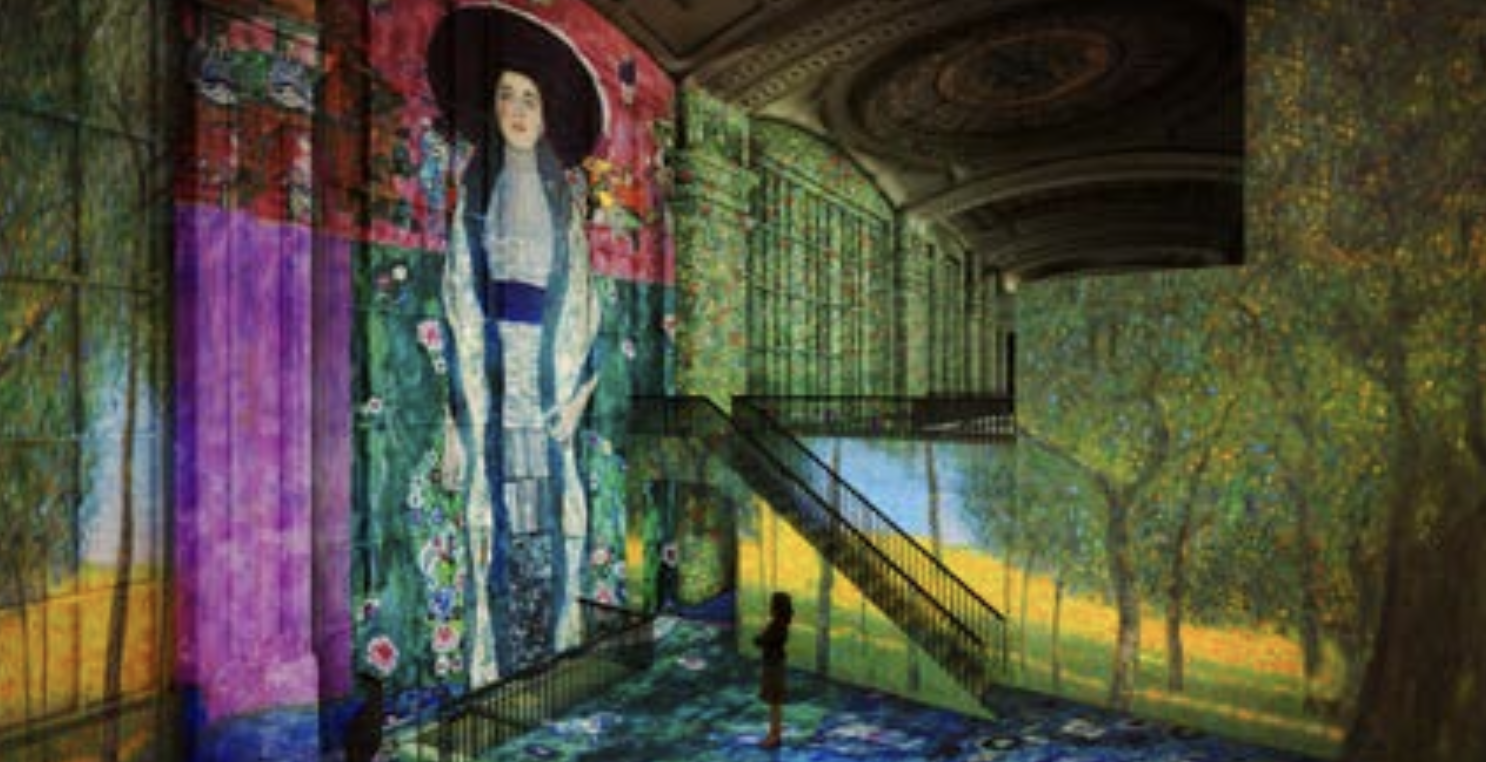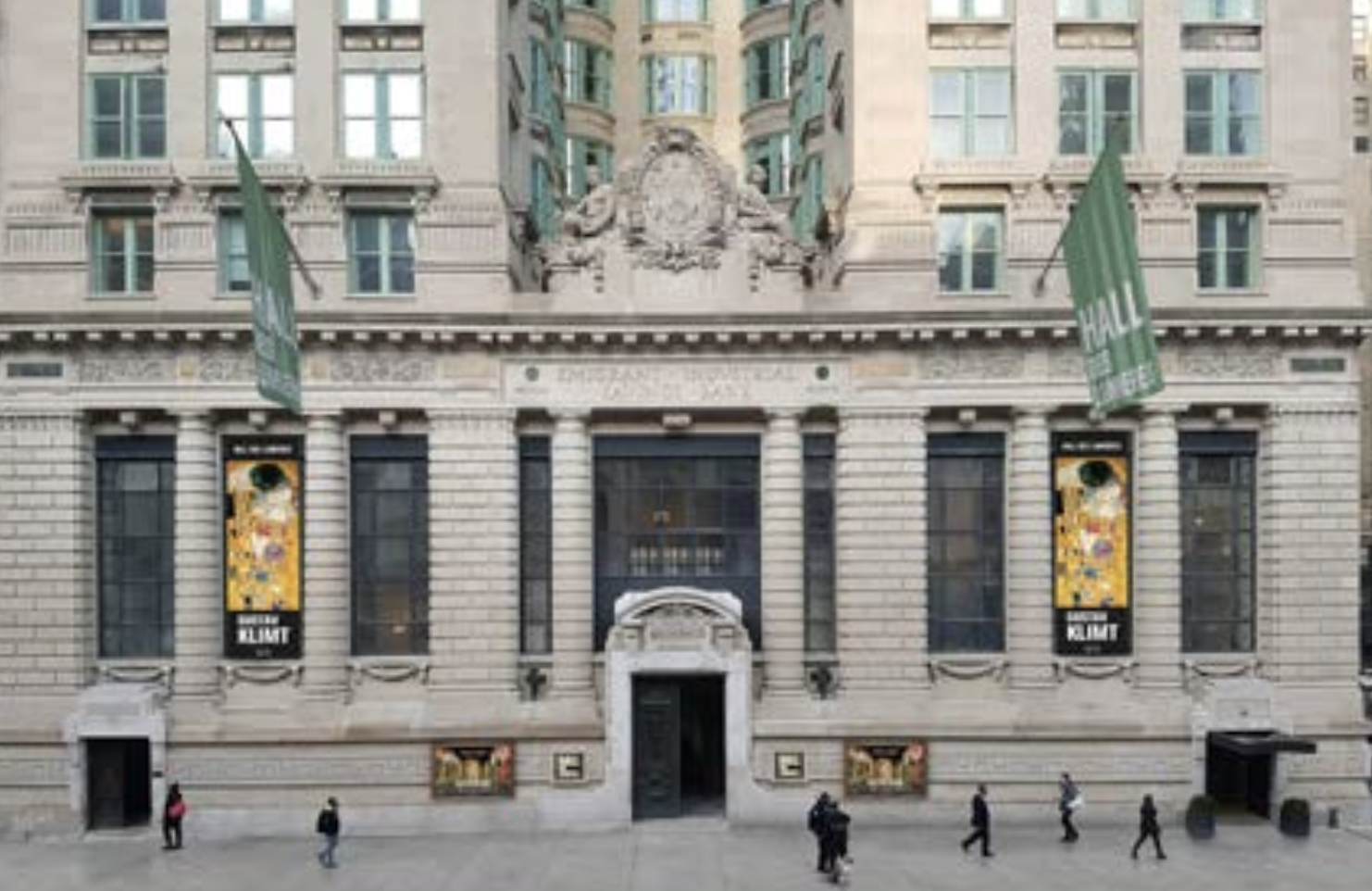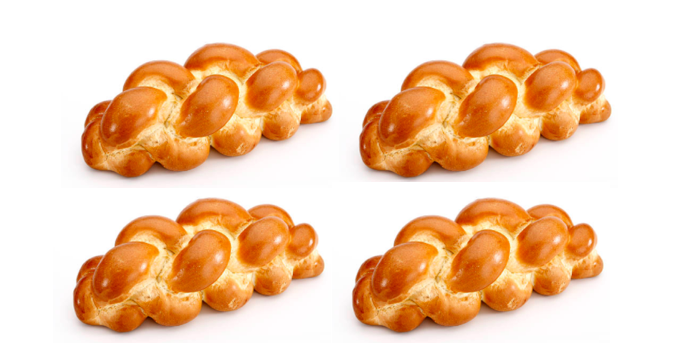Immersing in the Art and Atmosphere of Gustav Klimt, Adored Painter of Viennese Jewry
By Sue Weston and Susan Rosenbluth – Two Sues On The Aisle
Custom-designed immersive art—defined as multimedia, full-bodied experiences that harness technologies, such as virtual reality, holography, and digital projection, to enable viewers to enter a work of art and become part of it. Immersive art in New York City has a new home at Hall Des Lumières located in the former Emigrant Industrial Saving Bank across from New York’s City Hall. Hall Des Lumières uses the building’s century-old history, coupled with its vaulted ceilings, and majestic spaces, to live up to its name: It is truly a hall of lights.
The site’s inaugural installation, Gustav Klimt: Gold in Motion, is a thematic journey through the golden, sensuously revolutionary art of the Viennese painter of the late 19th and early 20th centuries. The use of animation allows the pictures to explode, raining into a million pieces that provide a visual transition from one piece to the next. Each image gets a few seconds before the next one is whisked in its place. The sizes of the images vary, and many are animated so that details appear in assorted sizes.
The installation was created exclusively for Hall des Lumières by an artistic team led by Gianfranco Iannuzzi whose original immersive experience of the work of Vincent van Gogh was recently shown in cities throughout the world, including New York.
Although the part of the installation billed as a “multi-sensory celebration of Glimt’s most iconic work” takes only about a half hour, it is repeated throughout the building, and the dreamy sequences of the paintings, blown up and projected across the walls, floors, and pillars of the former bank, look quite different from the various platforms and views available.
Impressive Soundtrack
The installation features dozens of luminescent, 30-foot-high images of Glimt’s celebrated works, moving across the architecture, along with other sensory elements including a stately musical soundtrack arranged especially for this presentation.
The musical selections include many chosen for their power to evoke not only Glimt’s period and the atmosphere in Vienna where he worked but also the schools of art and philosophy that affected everything from painting to politics of the time. For example, as the sequence dedicated to animating Glimt’s 1902 Beethoven Frieze floats by, the soundtrack launches into the majestic “Choral” of the composer’s Ninth Symphony.
Not all the musical selections chosen for the exhibit are associated with the visuals they accompany. Often, the goal seems to be finding music that captures the theme or feeling conveyed by the image or the struggle of the artist to present it.
The music ranges from Wagner’s Tannhauser Overture to a Chopin piano concerto, and from a Strauss waltz to Mahler lieder. There’s an appearance by Puccini (the Humming Chorus from Madam Butterfly) and the lush whipped cream of Franz Lehar. Interspersed, there’s a lot of Avant-Garde modern music (Philip Glass, Max Richter, Jonatan Szer) which seems to be a recognition that the battle to resist what the past calls “classical” must go on.
Jewish Patrons and Models
Klimt, who was Catholic, had many Jewish backers and patrons and more than a few Jewish models, especially among Vienna’s wealthy elite. He painted one of them, the beautiful dark-haired Adele Bloch-Bauer, twice, once in 1907 and again in 1912. The first portrait was the subject of the 2015 film Woman in Gold, the story of a Jewish Holocaust survivor’s successful struggle to retrieve her family’s painting decades after it was stolen by the Nazis.
After World War II, the first Portrait of Adele Bloch-Bauer, which is featured in Gold in Motion, found its way to the Austrian State Gallery in Vienna, where it was on display without controversy until the 1990s.
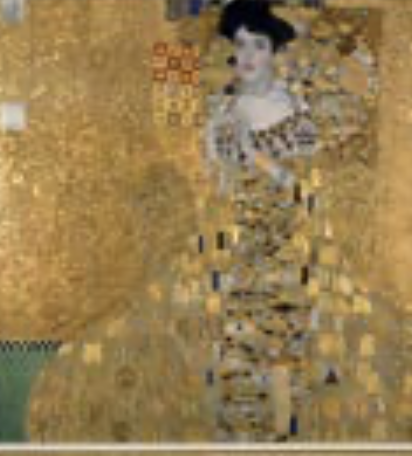
Photo credit: Gustav Klimt, Portrait of Adele Bloch-Bauer I, 1907 Neue Galerie, © Luisa Ricciarini / Bridgeman Images
When Maria Altmann, a niece of Ferdinand Bloch-Bauer, the portrait’s patron as well as the husband of its subject, first began her legal suit to have it returned, she offered to allow the Austrian government to keep the painting on display with one proviso: Austria had to admit it had been stolen. They refused. In 2006, after a lengthy international legal battle, crisscrossing Austrian and US venues, including the Supreme Court, five Klimt paintings were returned to the Bloch-Bauer family.
The painting’s reproduction in the Gold in Motion exhibition is captivating. Its realistic treatment of the subject’s face and arms is striking while, at the same time, the focus is drawn to the exquisite, billowing dress, intricately decorated with gold abstractions. The painting has justifiably been dubbed Austria’s equivalent of the Mona Lisa.
The painting, Woman in Gold is on display at the Neue Galerie located at 1048 Fifth Avenue (at 86th Street) in New York City. It is part of Ronald Lauder’s Standing Collection. Tickets are available online.
Vienna Secessionist
A founding member of the Vienna Secessionist Movement, Glimt and his colleagues, including painters, graphic artists, sculptors, and architects, strove to create “total art,” a model of unification of their specific disciplines. In 1897, they formed their own group to oppose Vienna’s reigning standards of art, specifically the sense that the artistic establishment was more concerned with commerce than aesthetics. The war waged by these proponents of Nouveau Art was not with artists of the past but rather, as literary critic Hermann Bahr wrote, with “peddlers who pose as artists and have a commercial interest in not letting art bloom.”
To modern eyes, it seems impossible that one of Klimt’s most popular works, The Kiss, should ever have been controversial. Painted between 1907 and 1908, it depicts a couple embracing, their fully shielded bodies entwined in elaborate, beautiful robes of gold.
The gorgeous Stoclet Frieze, painted between 1905 and 1911 for the dining room of the Stoclet Palace in Brussels, consists of three panels: “Expectation” (a fully-clothed woman looking provocatively across the panels), “The Tree of Life” (a sprawling, spiraling impressionist representation that seems to grow and fill the space), and “Fulfillment” (as in The Kiss, a standing man, and woman embrace).
In The Kiss, the only exposed part of the woman’s body are her feet. The painting fully explores Klimt’s common themes of love, intimacy, and sexuality. His decision to keep the lovers almost fully clothed may have been a reaction to the reception given to his three-part Vienna Ceiling series. Painted over a seven-year period beginning in 1900, the Vienna Ceiling was criticized as “pornographic” and evidence of “perverted excess.”
While that may have gone a bit too far for paintings designed to represent Philosophy, Medicine, and Jurisprudence on the ceiling of the University of Vienna’s Great Hall, there is no question that many of Klimt’s works represented in Gold in Motion are erotic celebrations of nudity, albeit in the artist’s impressionist, often abstract style.
Other Segments
Although Klimt is the headliner of this immersive installation, the show includes several other segments. One is devoted to the work of the artist Friedensreich Hundertwasser (1928 – 2000), who carried forward the spirit of the Vienna Secession for decades after Glimt. Entitled “Friedensreich Hundertwasser: In the Wake of the Vienna Secession,” this installation highlights the work of a postwar artist whose paintings provide an explosion of color and motion with themes that focus on the environment and the need to protect it.
He seems to have been fascinated with biomorphic forms—naturally occurring patterns and shapes—especially spirals. He admitted to detesting the straight line, which he called “godless and immoral.” In fact, he once insisted, “The straight line leads to the downfall of humanity.”
Another part of the installation, “5 Movements,” is a ten-minute immersive audiovisual experience that follows five dancers across five musical movements. The viewer is surrounded by the dancers, who fill the space with motion and sound. Each viewer becomes part of the performance as the projected imagery covers the entire space, including the walls, floors, and all the observers.
Lastly, tucked away in the space previously used as the bank’s vault is “Recoding Entropia,” an immersive film experience by François Vautier, using mirrored ceilings and floors to create a prism.
Start by Reading
We would suggest patrons begin by taking a quick detour to the downstairs area where panels explain a great deal about the exhibition and the artists. Since there is no other reading material or program, this is where it’s possible to gain both bearings and perspective.
After completing the reading, the patron can experience the exhibition by either returning to the upstairs banking floor or staying on the lower level.
One of the hallmarks of an immersive show is the lack of guides to direct viewers where to look. The idea is to experience the imagery displayed across all surfaces—above, below, and surrounding you. Each space offers a distinct perspective and experience.
Find Your Level
Since there are several viewing locations, we would advise starting with one and then watching the show again from another. No matter which one is chosen, the viewer will enter a darkened space and be met by an onslaught of swirling colors and sound as Klimt’s works are animated and projected on 30-foot-high columns and marble walls.
Imagery materializes and fades, synchronized to the music. The power of the space and art comingle into a sensory experience that marries distinctive historical styles, all opulent, fleeting, and breathtaking.
It is overwhelming, powerful, and…unsettling, at least at first.
We found the upstairs floor—where, in the building’s previous life, banking took place—more austere and overpowering as the images were projected across the cavernous room. Downstairs in the basement, the experience was more intimate and personal as images filled the room and we became part of the art.
In fact, we preferred the more intimate space downstairs, where we were able to shift our gaze to take in the entirety of the performance. The difference in the experience between the upstairs and the basement was astonishing.
Magnificent Site
Not to be overlooked in the experience is the chance to experience the site. Hall Des Lumières takes advantage of the architecture and design of the former Emigrant Industrial Savings Bank, which was constructed between 1909 and 1912. When it was built, this 33,000-square-foot space, located at 49 Chambers Street, in Lower Manhattan, was one of New York City’s most impressive examples of the Beaux Arts architectural style.
The largest bank building in the United States and the first skyscraper to use the “H” layout, this landmark building boasts a magnificently ornate, frieze-embellished-façade banking room beneath a vaulted 40-foot ceiling.
Its creation as a permanent site for immersive art was a collaboration between Culturespaces, founded by Bruno Monnier in 1990, and IMG, a global leader in events, fashion, sports, and media.
Immerse Yourself
It’s important to remember this is not a traditional museum, and those who attend should not expect the same thrill of viewing an original Glimt, framed and on display. The goal of Hall Des Lumières is to allow the experience of art in motion held in a magnificent venue.
Take the time to breathe in first the space and then the art and music as you watch and experience what is happening above, below, and around you. Immersive art is meant to be savored, not rushed. Enjoy the experience.
The exhibit is open Sundays through Wednesdays, 10 am to 7 pm, and Thursdays through Saturdays, 10 am to 10 pm. The installation runs continuously, and there are no fixed viewing times. Tickets are available through TicketMaster.
*********
Two Sues on the Aisle bases its ratings on how many challahs (1-5) it pays to buy (rather than make) in order to see the play, show, film, or exhibit being reviewed.
Gustav Klimt: Gold in Motion received a 4-Challah rating from one of us and a 3-Challah rating from the other.

